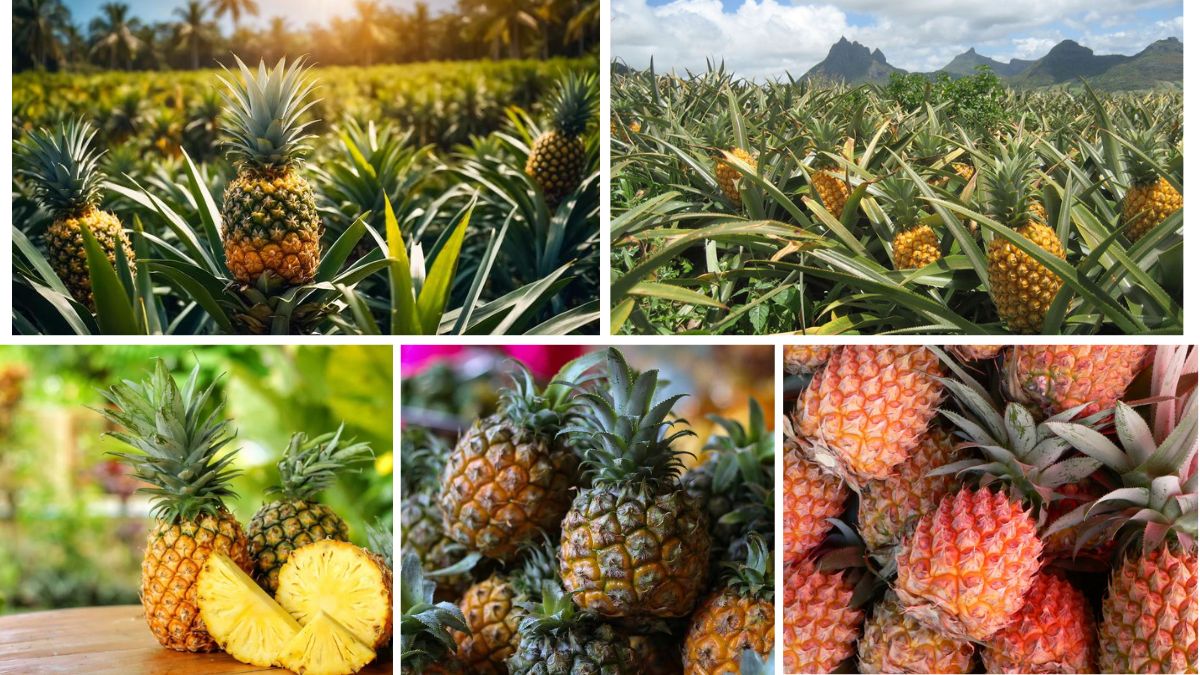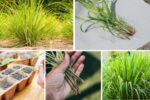Pineapple (Ananas comosus), the spiky, golden-fleshed tropical fruit, is not only a global symbol of hospitality but also a major agricultural commodity in the tropics. Beloved for its sweet and tangy taste, refreshing juice, and versatility in culinary and industrial use, pineapple is cultivated in more than 80 countries worldwide. But when it comes to the question “Which country is leading in pineapple farming?”, the clear answer is: Costa Rica.
Costa Rica has emerged as the undisputed global leader in pineapple production and export over the past two decades, outpacing other major producers like the Philippines, Thailand, and Indonesia. This article explores why Costa Rica holds this position, examines global production data, describes cultivation practices, outlines the economic and nutritional significance, addresses industry challenges, and provides suggestions for research directions.
Global Overview of Pineapple Production
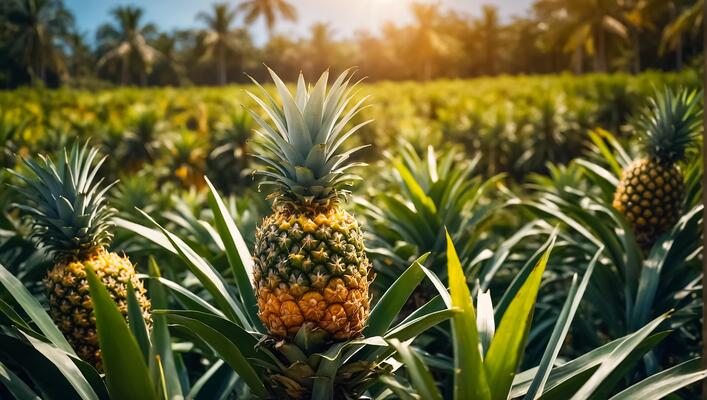
Pineapple thrives in tropical and subtropical climates, favoring regions with temperatures between 22–32°C, high humidity, and well-drained soils. The global production of pineapple exceeds 28 million metric tonnes annually, with production concentrated in Asia, Latin America, and parts of Africa.
Top Pineapple-Producing Countries (Recent FAO Estimates)
- Costa Rica – ~3.4 million tonnes
- Philippines – ~2.7 million tonnes
- Thailand – ~2.5 million tonnes
- Indonesia – ~2.4 million tonnes
- India – ~1.7 million tonnes
- Nigeria – ~1.6 million tonnes
- China – ~1.5 million tonnes
- Brazil – ~1.3 million tonnes
- Mexico – ~900,000 tonnes
- Colombia – ~800,000 tonnes
While other countries produce large quantities, Costa Rica’s dominance lies in exports—it supplies over 60% of the pineapples traded internationally, especially to the United States and Europe.
Why Costa Rica Leads in Pineapple Farming

Costa Rica’s success as the top pineapple producer stems from a combination of natural conditions, technological adoption, and export-focused policies.
1. Ideal Climate and Geography
Costa Rica’s tropical climate with consistent rainfall, rich volcanic soils, and stable temperatures year-round creates optimal conditions for pineapple cultivation. The Atlantic lowlands, particularly Limón, and the northern lowlands around San Carlos are the primary production hubs.
2. Export-Oriented Agriculture
While some countries focus on domestic consumption, Costa Rica’s pineapple industry is geared toward exports. About 90% of the pineapples grown are exported, primarily fresh, meeting stringent quality standards of European and North American markets.
3. Large-Scale Commercial Farming
Unlike smallholder-dominated systems in many countries, Costa Rica’s pineapple industry is dominated by large commercial plantations. These benefit from economies of scale, mechanization, and modern agricultural practices.
4. Strong Branding and Market Access
Costa Rica has positioned itself as a source of premium-quality pineapples, especially the MD2 variety (marketed as “Extra Sweet”). This variety is favored for its sweetness, golden color, low acidity, and longer shelf life.
5. Government and Private Sector Support
Government export promotion agencies and private companies collaborate to ensure quality control, compliance with food safety standards, and promotion in global markets.
Pineapple Cultivation in Costa Rica – Practices and Productivity
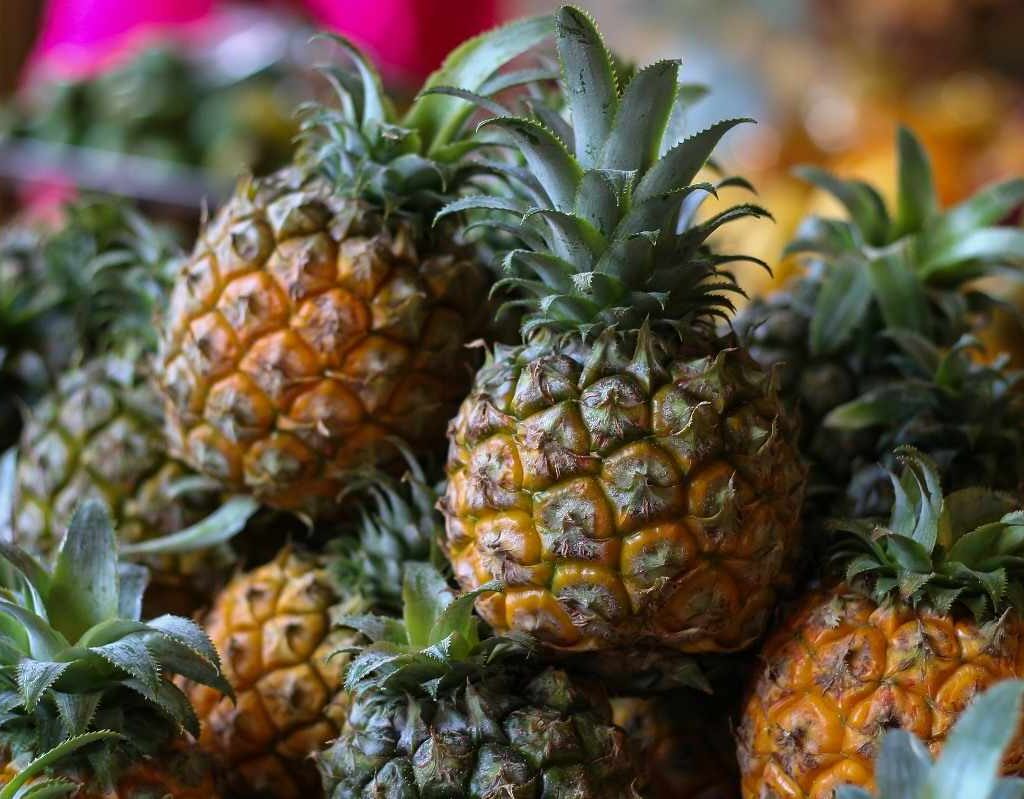
Variety
The MD2 (Del Monte Gold®) variety dominates Costa Rican plantations, replacing older varieties like Smooth Cayenne. MD2 is sweeter, more aromatic, and maintains freshness longer during shipping.
Planting and Production Cycle
- Propagation: Pineapples are propagated vegetatively using crowns, slips, or suckers.
- Plant Density: 60,000–70,000 plants per hectare is common for commercial farms.
- Cycle Duration: From planting to harvest takes about 13–18 months. Fields are often replanted after 2–3 harvest cycles to maintain quality.
Soil and Water Management
- Soil Type: Volcanic soils rich in organic matter are ideal.
- Irrigation: Rain-fed farming is common, but supplemental drip irrigation is used during dry periods.
- Fertilization: Balanced use of nitrogen, potassium, and micronutrients ensures sweetness and size.
Pest and Disease Control
Major threats include mealybugs, nematodes, and fungal diseases like heart rot. Integrated pest management (IPM) strategies and crop rotation are used to reduce chemical dependency.
Harvesting
Fruits are harvested when mature green or with a slight yellow blush, depending on export requirements. They are quickly transported to packing facilities for cleaning, grading, and shipment.
Nutritional and Health Benefits of Pineapple

Nutritional Profile (per 100g)
- Calories: ~50 kcal
- Water content: ~86%
- Vitamin C: ~47.8 mg (80% of daily requirement)
- Manganese: ~0.9 mg (45% of daily requirement)
- Fiber: ~1.4 g
- Bromelain: A proteolytic enzyme unique to pineapple.
Health Benefits
- Boosts Immunity: High vitamin C content supports immune function.
- Aids Digestion: Bromelain helps break down proteins, reducing bloating and indigestion.
- Anti-Inflammatory Effects: Bromelain also has anti-inflammatory and pain-relieving properties.
- Supports Bone Health: Manganese is essential for bone strength and metabolism.
- Hydration: High water content helps maintain fluid balance.
Economic Importance
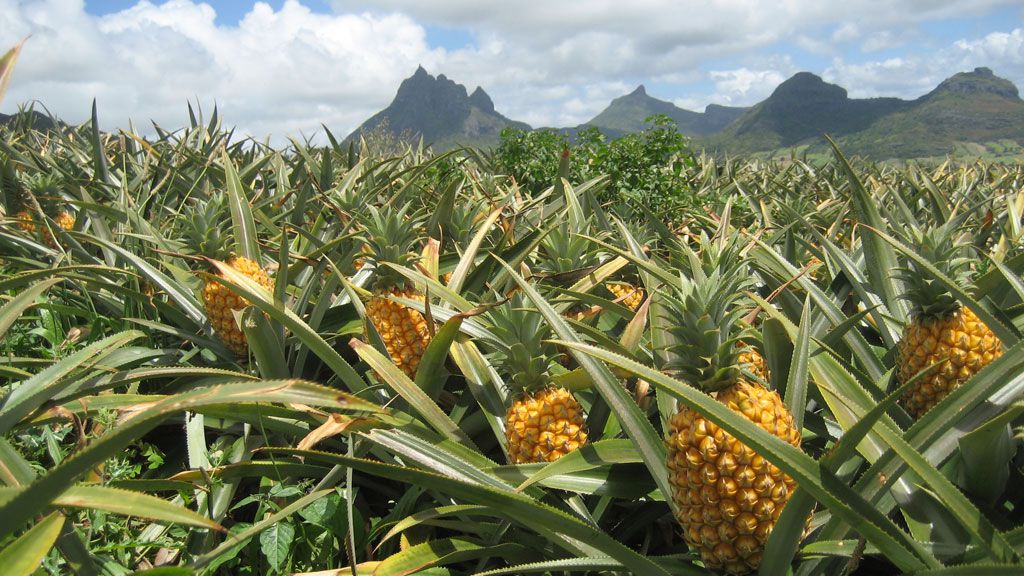
For Costa Rica
- Export Earnings: Pineapple is one of Costa Rica’s top agricultural exports, generating over $1 billion annually.
- Employment: The industry employs more than 30,000 workers, particularly in rural areas.
- Trade Relationships: Strong links with U.S. and European buyers secure market stability.
Global Trade
- Major Importers: United States, Netherlands, Spain, Germany, Belgium, and the United Kingdom.
- Export Products: Primarily fresh pineapples, but also juice, canned slices, dried pineapple, and bromelain extracts.
Challenges in Pineapple Production
Despite its success, Costa Rica’s pineapple industry faces significant challenges:
- Environmental Concerns: Large-scale monoculture leads to deforestation, soil erosion, pesticide runoff, and water pollution in some areas.
- Labor Issues: Reports of low wages, poor working conditions, and labor rights violations have raised concerns.
- Pest and Disease Risks: Overreliance on a single variety (MD2) increases vulnerability to disease outbreaks.
- Market Saturation: Heavy dependence on a few export markets makes the industry sensitive to price fluctuations and trade barriers.
- Climate Change: Increasing temperature variability and extreme weather events threaten yields.
Strategies for Sustainable Growth
To maintain leadership and address sustainability issues, Costa Rica and other producers should consider:
- Varietal Diversification: Develop and promote alternative pineapple varieties with different flavors, colors, and uses.
- Sustainable Farming Practices: Adopt integrated pest management, organic farming, and reforestation programs.
- Improved Labor Conditions: Strengthen worker protections and fair wage policies.
- Market Diversification: Explore new export destinations in Asia, the Middle East, and Africa.
- Value Addition: Increase exports of processed products to reduce dependence on fresh fruit sales.
Research Opportunities for a Thesis
A thesis on this topic can cover:
- Comparative yield and profitability analysis between Costa Rica and other top producers.
- Socio-economic impacts of pineapple farming on rural communities.
- Environmental footprint and sustainability of large-scale pineapple monoculture.
- Market trends and consumer preferences for different pineapple varieties.
- Effects of climate change on tropical fruit production.
Conclusion
Costa Rica’s rise to become the world leader in pineapple farming is a remarkable story of leveraging natural advantages, technological efficiency, and market strategy. Producing over 3 million tonnes annually and dominating the export market, Costa Rica has built a reputation for high-quality, sweet, and visually appealing pineapples that meet global standards.
However, maintaining this leadership will require addressing environmental, social, and economic challenges, as well as preparing for market and climate uncertainties. For researchers, the pineapple industry offers valuable insights into global agri-trade, sustainability practices, and the complex interplay between economic success and ecological responsibility.
